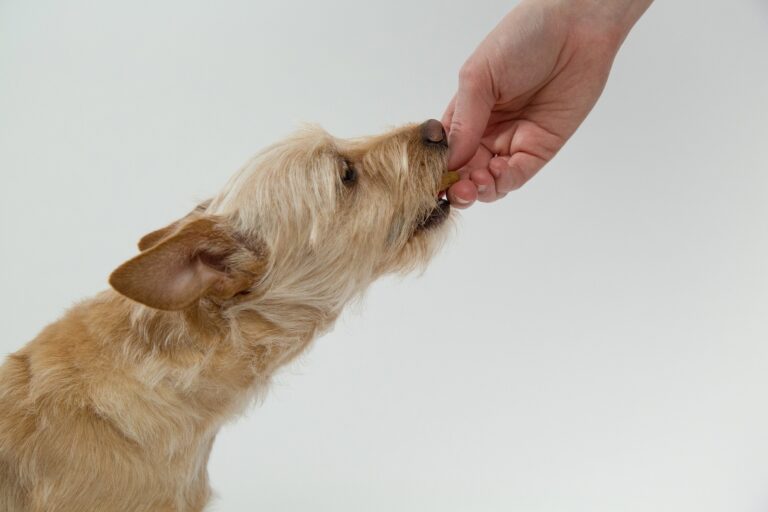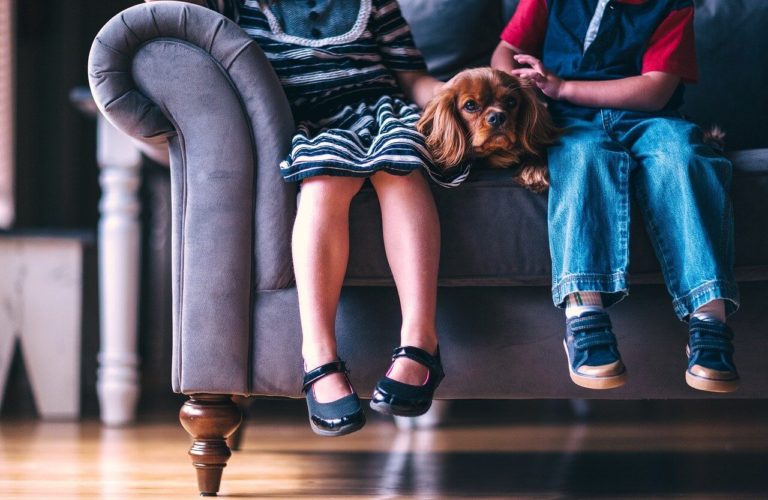An animal moves in. If it is the first pet, it is surprising how much actually has to be considered. This fact can not even be limited to dogs and cats, because if you do not secure everything for the move-in of the rabbit, you will feel that neither cables nor carpet are safe from rabbit teeth. But how to design a house or apartment suitable for animals, of course, from the point of view that the person should still feel comfortable? This article gives five tips.

Tip 1: Select Animal-friendly Floors
In advance: Of course, this tip is feasible on a large scale only in a renovation that is being considered anyway, and in rented apartments only if the floor may be changed. In principle, however, the motto is that floor coverings must be easy to clean and should not allow moisture to pass through directly. Where which floor is located is no longer so important today, since laminate floors have long been suitable for the kitchen. However, anyone who wants to plan his kitchen pet-friendly, has important points to consider.
1. Eating Corner
Often it is in the kitchen. Neither dogs nor cats have good eating manners, so a base is essential. It should be large enough so that there is still room around the bowl. While with dogs the water bowl may stand at the feeding place, the water bowl with cats should always stand further away from the food.
Tip: On wooden floors, place an absorbent pad under the water bowl. Quite a few cats dip their paws into the water to drink.
Living Spaces For Cats
Unlike dogs, smooth floors do not bother cats. But they make special demands on carpets and runners. At high-pile carpets cat owners usually quickly lose their joy, because the animals regularly throw up and often choose the carpets for this. Whether fringe carpets are suitable, the cat decides. Some try to eat the fringes.
Living Spaces For Dogs
Many dogs find it difficult to walk on smooth floors, it is also unhealthy. Some dogs are even afraid of them. Therefore, runners are a good advice.
Tip 2: Remove Dangerous Plants
Houseplants can be incredibly dangerous for animals. However, this does not mean that there should be no more plants in pet households, some green plants can even be used for the animal. Green lily, provided flowers are removed, is a popular alternative to cat grass for cats.
With dogs, it is often sufficient to simply place the plants out of the animal’s reach. Cat owners do not have this luxury, as the animals get up everywhere. And rabbits also show themselves very eager to jump and climb when it comes to reaching the ornamental plants on the windowsill.
Which plants should not be in the apartments, on balconies or even terraces and gardens, reveals this list.
Tip 3: A Separate Area
Each animal needs its own area. Especially for dogs, this should be clearly defined, because it is a place of retreat as well as the safe haven at the same time. It applies
- Staging areas – there should be a dog pillow or basket at each fixed staging area. Usually the center is in the living room, so that the most important zone is designed here. Other zones are in the bedroom and, if necessary, study.
- Necessity – the dog zone is also used for education. For moderation or if the dog gets upset, it is sent to the blanket .
It is important to have washable materials that can be dehaired as much as possible, so that the cover fabric can be washed in the machine. Many dog beds have a replaceable and refillable Styrofoam filling.
And what about cats? Cat owners know it can be more complicated .
- Necessities – scratching posts and good, unobstructed scratching posts are key. Many cat also love hiding places, which come in practical forms, such as a slide-in box for a popular shelf.
- Blankets/pillows – the cat will lie where it wants. Own blankets are more suitable to protect furniture. If you have high cabinets or shelves, you can create a corner for your cat high up with plain glued carpet tiles. Catwalks, which are boards, bridges and recesses attached to the wall, are also in demand.
Many dogs, but especially cats, love it when they receive blankets from humans. Thus, old cuddly couch blankets can often still be used to create good dens or lounging areas.
Tip 4: Stoppers For Doors
Doors are a great danger for animals. If they slam shut in the wind, a paw or tail likes to get stuck between the door panel and the frame. Closed doors can also be dangerous, because if an animal plays with the key, the room door is quickly locked. Therefore, the following tips apply.
- Door stoppers – they are handy for ventilation anyway, but they also protect pets. The stoppers should be large and heavy, so that the animal does not move the stopper when playing.
- Latch guards – even a cat can push open a smooth-running door with force and slam it against the wall. Silicone sleeves slipped over the door handle will protect the wall.
- Open holders – especially with cats, there is one area that can never be closed: The room with the litter box. If you don’t want to tie a cloth around the latch and door, you can find dedicated devices online that prevent the door from slamming shut. Caution: do not hold a door open with the key turned. In a strong gust of wind, it can fall into the lock – if the key is now on the wrong side, the door must be opened professionally.
By the way, draft stoppers that are clamped to the bottom of the door prove useless with quite a few pets. They are simply chewed off or loosened with their claws.
Tip 5: Windows, Kitchen, Outside

The pet-friendly home has quite a few traps built in. Tilt windows can even become a major hazard for dogs if they get caught in the gap. If there is a window sill on the side of a patio or balcony door, this happens quickly to dogs. Cats also tend to get curious around tilt-up windows. The problem is that the animal automatically slides down the gap and gets trapped. Every year, many animals die in this way.
Special tilt window guards are available to prevent this. More ecologically sensible, however, are special fly screens that are inserted into the frame and whose material can withstand cats and smaller dogs. Now the window can also be opened completely. Other dangers lurk in the outdoor area and in the kitchen.
- Outside – for cats, the balcony must be equipped with a cat net. Hardly any animal does not climb or jump on the parapet and try to chase insects or birds. For small animals, including kittens and small breeds of dogs, care must be taken with parapets that are open at the sides. If the gap between the floor surface and the parapet is too large, the animal could fall off or get trapped.
- Kitchen – this is especially true for cat households: Animals jump on the stove even when they’re not supposed to. If you don’t have an induction stove, you should always put a pot of water on hot stove tops. In addition, young cats tend to climb into the oven.
Depending on where the dryer and washing machine are located, care should be taken here as well. It happens less often with small dogs, but cats like to sleep in the clothes dryer sometimes.
Conclusion – Pet Ownership Means Change
If the first pet moves in, the change is partly large. Certainly, it also depends on the character of the animal and the type of animal, but precautions are almost always necessary. Rodents should not be underestimated. During the free run rabbits, guinea pigs, but also hamsters or rats nibble at everything that comes between their teeth. Especially with electric cables there is an increased danger here – also for the owner. Animals often sense the current and stop gnawing, but have already damaged the cable. A short circuit or smoldering fire can now easily occur.










1 thought on “Making Your Own Four Walls Pet-friendly: With These 5 Tips To Success”